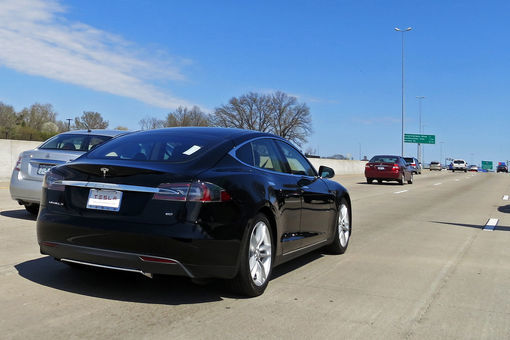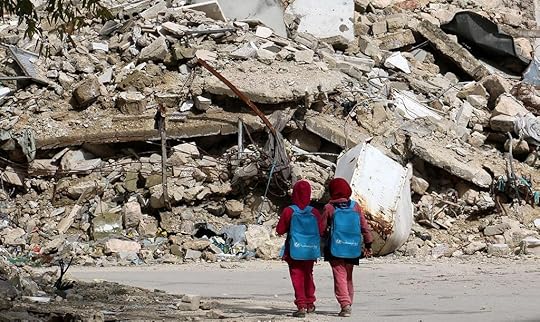Steve Bull's Blog, page 1266
November 3, 2017
‘Ticking a box is no longer an option’: David van Reybrouck on elections, imagination and Brexit.
David van Reybrouck lives in Brussels, is a pre-historic archaeologist, but works mostly as a literary writer, and as a non-fiction writer. He’s probably best known for his book ‘Congo: the epic history of a people’, for appearing in the film ‘Tomorrow’ (‘Demain’), and for his more recent book ‘Against Elections: the case for democracy’, which is a brilliant read. We met up via Skype, and talked imagination, Brexit, and reimagining how we make decisions together.
I wonder if you had any thoughts on in what ways the current way that we practice democracy in the West diminishes our imagination, maybe particularly in relation to our ability to imagine something other than business as usual?
You could say that the procedures we use today to do democracy have drastically narrowed down the scope of what is politically imaginable. To me, although I’m interested in politics, it’s become quite a bit of a boring game, really. It’s all about winning elections, trying to build a coalition, trying to run a government, or be against the government that is in power. The bickering that is going on is not very rich. The strategies that are being used for political gain and political loss are less interesting than watching the Tour De France on a boring day.

Political journalism very often has come down to a form of sports journalism, really. Like, who has made what manoeuvre and what will it bring to him or to her. The political game as it is being played these days is a pretty boring one, and a pretty predictable one, yes.
…click on the above link to read the rest of the article…
Will The Third Great Energy Revolution End The Oil & Gas Industry?

The history of crude oil and natural gas is a history of technological innovation. Until recently the innovation supported crude oil and natural gas. Now, it challenges it, causing structural changes in the crude oil and natural gas markets.
Originally, crude oil was only used for lighting. This changed following the invention of the internal combustion engine, which outperformed steam engine in power, range and ease of operation and maintenance, and the invention of the conveyor belt, which made it possible to mass-produce the internal combustion engine at a price which was affordable to the masses. Not much later, crude oil became the transportation fuel of choice. The horse drawn carriage was replaced by the car; the locomotive by the diesel train; the steamship by the motor vessel; and the zeppelin by the airplane.
For a long time, natural gas was an unwanted by-product from crude oil production, and typically burned off (flared) at the production site. That was until, again, technological innovation made utilization of the benefits in natural gas possible. Improvements in pipeline technology made it possible to use natural gas as a feedstock for the chemicals industry, and as fuel for home heating, cooking and power generation. Later on, LNG technology improvements greatly expanded the market for natural gas and made it truly global.
Technological innovation was therefore not only behind the first great energy revolution—from wood to coal—during the Industrial Revolution of the 18th and 19th century, but also behind the second great energy revolution—from coal to crude oil and natural gas—during the first half of the 20th century.
…click on the above link to read the rest of the article…
Eight Catalonia Ministers Jailed, Madrid Seeks European Arrest Warrant for Catalan Leader

Spain, a country that supports a two-state solution in Palestine, detained eight Catalan ministers on trumped up charges of sedition. Prosecutors also seek an arrest warrant for ousted Catalan leader Carles Puigdemont.
We all knew it would come down to this: Sacked Catalonia Ministers Held by Madrid Court.
Eight sacked Catalan ministers have been remanded in custody by a Spanish high court judge over the region’s push for independence. Prosecutors had asked the judge to detain eight of the nine former regional government members who turned up for questioning in Madrid.
They are accused of rebellion, sedition, and misuse of public funds. Prosecutors are also seeking a European Arrest Warrant for ousted Catalan leader Carles Puigdemont.
The request also covers four other dismissed Catalan ministers who did not show up in court in Madrid as requested, but have been in Belgium since Monday.
Detained
Former Deputy Vice President Oriol Junqueras
Former Interior Minister Joaquim Forn
Former Foreign Affairs Minister Raül Romeva
Former Justice Minister Carles Mundó
Former Labour Minister Dolors Bassa
Former Government Presidency Councillor Jordi Turull
Former Sustainable Development Minister Josep Rull
Former Culture Minister Meritxell Borras
In a statement broadcast on Catalan TV from an undisclosed location in Belgium, Mr. Puigdemont described the detention of the eight ex-ministers as “an act that breaks with the basic principles of democracy”.
What’s Next?
If Spain’s high court judge issues a warrant, a European Arrest Warrant (EAW) will be sent to Belgian prosecutors, who have 24 hours to decide whether the paperwork is correct. If they do, they then have 15 days to arrest Mr. Puigdemont and the four others. If one or all of them appeals against it, that process could last another 15 days.
…click on the above link to read the rest of the article…
Record surge in atmospheric CO2 seen in 2016
 Last week the BBC carried another scare story on climate change, this time citing a report on CO2 from the World Meteorological Organisation:
Last week the BBC carried another scare story on climate change, this time citing a report on CO2 from the World Meteorological Organisation:
“Concentrations of CO2 in the Earth’s atmosphere surged to a record high in 2016, according to the World Meteorological Organization (WMO).
Last year’s increase was 50% higher than the average of the past 10 years.
Researchers say a combination of human activities and the El Niño weather phenomenon drove CO2 to a level not seen in 800,000 years.
Scientists say this risks making global temperature targets largely unattainable.”
Since this reporting is from the BBC, my default reaction is to treat it with a good deal of scepticism. So I decided to check out the numbers.
To my surprise the “50% higher than the average of the past 10 years” appears to be correct (Figure 1). The mean dCO2 2006-2015 was 2.1 ppm. The 2016 figure of 3.4 ppm is indeed 62% higher than the prior 10 year mean. We need to ask the serious question if this is a cause for concern?
Figure 1 Annual dCO2 from Mauna Loa based on monthly data downloaded from WoodForTrees. Annual means were calculated and annual dCO2 equals arithmetic difference from year to year.
The arrows on Figure 1 point to strong to very strong El Niño events. The very strong El Niño of 1982 / 83 does not register a CO2 spike, but the CO2 spike of 1988 does coincide with a strong El Niño. We are on fairly safe ground saying that the three marked and one unmarked CO2 spikes are linked to El Niño. We know that ocean surface warming will lead to reduced capacity to absorb CO2.
…click on the above link to read the rest of the article…
d surge.
Are Driverless Cars a Good Way to Help Stop Greenhouse Warming, or Is Greenhouse Warming a Good Pretext for Selling Driverless Cars?

Photo by Paul Sableman | CC by 2.0
The automakers and IT giants are predicting that autonomous vehicles (AVs or “driverless cars”) will play a big role in reducing America’s currently extravagant emissions of greenhouse gases. In this claim (as in the assertion that flying cars will be more energy efficient than helicopters), climate mitigation is serving not as a goal but as a selling point for a lucrative new technology that society doesn’t need.
Most of the academic discussion of autonomous vehicles assumes the gradual introduction of both personal and shared electric AVs into the market. During that lengthy transition, AVs presumably will ply the streets and highways alongside human-driven electric and internal-combustion vehicles. How this is going to take us toward deep reductions in greenhouse emissions is not clear; the expectation appears to be that market forces and government incentives will somehow push the system toward fully autonomous, electrified transportation powered exclusively by renewable sources.
But the 100-percent renewable dream is a mirage, and AV cars will not bring it to life. That’s not due to any shortcomings of AVs; on the contrary, the technology’s failure to resolve the climate problem will be a result of the many attractive features that a successful AV-based system would offer—all of which will have the effect of increasing greenhouse emissions.
In a commentary on autonomous vehicles, Shelie Miller and Brent Heard of the University of Michigan wrote, “From an environmental point of view, the intrinsic technical attributes of AVs appear to be largely favorable.” However, they continued, it is “travel behavior patterns” that may have the greater influence, and that influence will be more negative.
…click on the above link to read the rest of the article…
For God’s Sake, Stop!
“Most economists, it seems, believe strongly in their own superior intelligence and take themselves far too seriously. In his open letter of 22 July 2001 to Joseph Stiglitz, Kenneth Rogoff identified this problem. ‘One of my favourite stories from that era is a lunch with you and our former colleague, Carl Shapiro, at which the two of you started discussing whether Paul Volcker merited your vote for a tenured appointment at Princeton. At one point, you turned to me and said, “Ken, you used to work for Volcker at the Fed. Tell me, is he really smart ?” I responded something to the effect of, “Well, he was arguably the greatest Federal Reserve chairman of the twentieth century.” To which you replied, “But is he smart like us ?”
Satyajit Das.
“..Every time a report lands on their desks, central bankers must stop to think about the economic, social and political havoc their policies have caused over the past 10 years.
“The desperate attempt to avoid deflation via quantitative easing and record-low interest rates has had horrible side effects, and this observation is hardly controversial. The rich have become much richer; corporate wealth has become more concentrated; soaring house prices have created intergenerational strife; low yields have made all but the super-rich paranoid that they will be entirely unable to finance their futures. Most markets have ended up overvalued (this will really matter one day), while pension fund deficits and a constant sense of crisis have discouraged capital investment — and have possibly held down wages in the UK.
“Set a target, get a distortion. This is standard stuff. But the fact that extreme monetary policy has been going on for so long means that central bankers do not just have macro problems to feel bad about.
…click on the above link to read the rest of the article…
November 2, 2017
South Korea Says Another North Korean Missile Test Is Imminent
It has been more than six weeks since North Korea has conducted a missile test, the longest lull so far this year, but that could be about to change, Reuters reported, citing unnamed South Korean military officials.
South Korean intelligence has detected a flurry of activity including the movement of vehicles has been detected at the North’s missile research facilities in Pyongyang, where the most recent missile test was conducted, pointing to another possible launch, South Korea’s Intelligence Service said in a briefing to lawmakers. It did not say how the activity was detected.
To be sure, this isn’t the first time South Korea has detected movement near the launch site. Similar reports emerged one month ago. The restive North also abstained during an Oct. 10 national holiday, and the Oct. 18 beginning of China’s National Party Congress. It’s believed North Korea is developing a new long range missile capable of reliably striking targets on the US mainland. Meanwhile, the North has made no secret of its plans to perfect a nuclear-tipped missile capable of reaching the U.S. mainland. It regularly threatens to destroy the United States and its “puppet”, South Korea.
“There is a possibility of a new missile launch given the active movement of vehicles around the missile research institute in Pyongyang. The North will constantly push for further nuclear tests going forward, and the miniaturization and diversification of warheads,” the intelligence agency said at the briefing.
As the North prepares for its next missile test, concerns surrounding its nuclear-testing facility in the northwestern town of Punngye-ri have intensified as scientists from China, the US and South Korea have warned that another nuclear test could trigger a full-on collapse of the mountain above the underground test site.
…click on the above link to read the rest of the article…
Cliché Series # 5: Perceiving Profiles Confined Within Certain Configurations

Whenever anyone uses the term conspiracy theory or calls someone a conspiracy theorist in any debate, they are, in most instances, revealing their own contempt prior to investigation. This is, in fact, an exemplification of prejudice even by those claiming their minds are open. In truth, they are not willing to consider any evidence that might challenge what they have previously decided to be untrue, or unproven; these, of course, being two very separate prospects.
If people were intellectually honest they would acknowledge, at the very least, the POSSIBILITY of SOME truth behind what they designate as “conspiracy”. Or, should they wish to engage in the discussion, they would debate using opposing facts; or any additional contravening corroboration behind their perspectives and ideological positioning.
This, of course, requires some level of enthusiasm to discuss any given subject and a moderate comprehension of the elementary facts regarding the stated topic. Sadly, for most people, they lack both, and when they cannot muster the energy to converse, acknowledge alternative possibilities, or present opposing arguments, they will then either engage in ad hominem labeling or attempt to characterize any perceived contradicting evidence as “conspiracy”.
Perhaps they do this as a defense mechanism in order to ensure the continuity of their worldview. Or it could simply be the result of apathy, laziness, fear, or pride. Or maybe most folks just don’t like loose ends.
Nevertheless, these are the people who comprise the majority of American citizens today. The same folks who swallow, hook, line, and sinker, that the September 11, 2012 attack on the American Embassy in Benghazi, Libya was caused by a YouTube video; and that the Russians hacked the 2016 Presidential Election.
Talk about conspiracy theories!
…click on the above link to read the rest of the article…
Tillerson: US to Build Additional De-Escalation Zones in Syria

Tillerson: US to Build Additional De-Escalation Zones in Syria
In his testimony before the Senate Foreign Relations Committee on October 30, Secretary of State Rex Tillerson told lawmakers that the US is working to create additional de-escalation zones in Syria. The secretary did not say where exactly the zones will be built. It’s logical to assume that the top diplomat meant the southern and south-eastern parts of Syria under the control of US-led Syrian Democratic Forces (SDF) and Kurdish militias.
The area accounts for about one third of the national territory with approximately 70% of hydrocarbons in Syria. Tillerson emphasized that he was not talking about demarcation zones to divide the country. He said the regime change was not the goal but the US executive will approach lawmakers for authorization to act against the government of Bashar Assad, if need be.
The secretary did not say that the plan presupposes an increase in military presence but, once established, additional zones will inevitably require more military personnel to carry the mission out. If the creation of the zones is coordinated with other actors, it won’t be Americans only. Russia, Jordanian and US militaries are controlling the de-escalation zones in the provinces of Deraa, Quneitra and As-Suwayda located in the south-western part of Syria. If Mr. Tillerson was talking about a unilateral move, then the US military presence will grow substantially, including armor units and other heavy military equipment.
The issue of setting up additional de-escalation zones was not on the agenda of the Astana talks on Syria held on October 30-31.The US was invited as an observer but nothing was said about the plan Secretary Tillerson announced to Congress. Creating de-escalation zones is never all roses. For instance, the process is not running smoothly in the province of Idlib.
…click on the above link to read the rest of the article…
BITCOIN vs. GOLD: Which One’s A Bubble & How Much Energy Do They Really Consume
If you are investing in either Bitcoin or Gold, it’s important to understand which asset is behaving more like a bubble than the other. While it’s impossible to understand how the market will value these two very different assets in the future, we can provide some logical analysis that might remove some of the mystery associated with the market price of Bitcoin versus Gold.
I’ve read some analysis on Bitcoin profitability and energy consumption that seemed unreliable, so I thought I would put my two cents in on the subject.
For example, many sites are using the Digiconomist’s work on Bitcoin energy consumption. However, I believe this analysis has overstated Bitcoin’s energy consumption by a large degree. According to the Digiconomist, Bitcoin’s annual electric use is approximately 24 TerraWatts per year (TWh/yr):

In a recent article that was forwarded to me by one of my readers, How Many Barrels Of Oil Are Needed To Mine One Bitcoin, the author used the information in the chart above to calculate the energy cost to produce each Bitcoin. He stated that the average energy cost for each Bitcoin equals 20 barrels of oil equivalent. Unfortunately, that data is grossly overstated.
If we look at another website, the author explains in great detail the actual energy cost to produce each Bitcoin. According to Marc Bevand, he calculated on July 28th, that the average electric consumption of Bitcoin was 7.7 TWh/yr, one-third of the Digiconomist’s figure. Here is a chart and table from Marc Bevand’s site showing how he arrived at the figures:

This graph shows the increase in Bitcoin’s hash rate and the efficiency of the Bitcoin Miners at the bottom.
…click on the above link to read the rest of the article…





